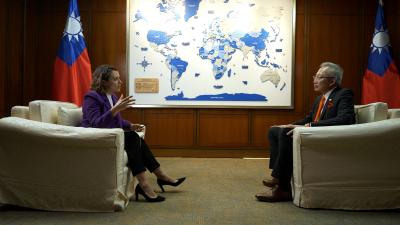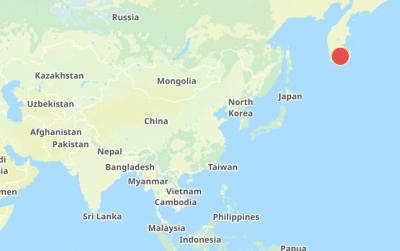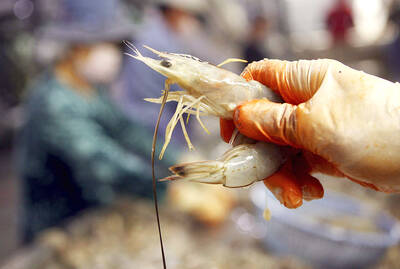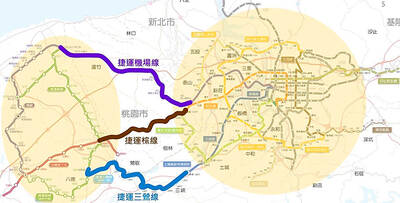A group of Taiwanese monks and nuns, joined by a number of counterparts from South Korea, Vietnam and Bhutan, have completed a special training session in which they literally learned to “swim across to the other side.”
“Swimming to the other side of the river and helping others do so” is at the center of Buddhist tenets, but people rarely see any monks or nuns swim because of a rule against “playing in water.”
Lin Chen-tsai (林呈財), chairperson of the Taiwan Wisdom Action Aspirant Water Life Saving -Association, which co-sponsored the three-day training session, said the Buddhist tenet actually advised members of the sangha (the community of ordained monks and nuns) not to waste time on meaningless activities, rather than against learning how to swim and help rescue people from drowning.
“Once a person learns lifesaving skills, he will not casually give up life and will be able to appreciate life and protect life,” Lin said.
Working with the Buddhist Association of Taipei, the Taiwan Wisdom Action launched a “sangha members swimming session” last year, training more than 30 monks and nuns for two days in fresh and seawater.
Last year’s session was so successful that both associations decided to hold another one this year, but did not expect to draw more than 200 participants, mostly temple leaders from around Taiwan. More nuns than monks took part. More than 200 licensed volunteers and 100 coaches taught them how to swim and how to rescue people.
The training program attracted more than 10 South Korean Buddhist leaders, monks and nuns, as well as others from Bhutan and Vietnam, who joined their Taiwanese counterparts to learn how to swim in Taoyuan County and Pinglin District (坪林), New Taipei City (新北市).
The students also acquired skills in saving people from rapid streams, administering CPR (cardiopulmonary resuscitation) and the Heimlich maneuver, and bandaging and moving the wounded. In support of the training session, the Buddha Light International Association arranged for all trainees and coaches to stay at a temple in Sansia (三峽), New Taipei City.
Many of the participants told reporters that after immersing themselves in an immense sea to learn how to save themselves and others, they better appreciated Buddha’s compassionate hope to “save others in a sea of pain.”
Lin said that if the religious sector can save physical lives, it will be better able to give comfort and encouragement to people psychologically.

“China is preparing to invade Taiwan,” Deputy Minister of Foreign Affairs Francois Wu (吳志中) said in an exclusive interview with British media channel Sky News for a special report titled, “Is Taiwan ready for a Chinese invasion?” the Ministry of Foreign Affairs said today in a statement. The 25-minute-long special report by Helen Ann-Smith released yesterday saw Sky News travel to Penghu, Taoyuan and Taipei to discuss the possibility of a Chinese invasion and how Taiwan is preparing for an attack. The film observed emergency response drills, interviewed baseball fans at the Taipei Dome on their views of US President

The Central Weather Administration (CWA) today issued a "tsunami watch" alert after a magnitude 8.7 earthquake struck off the Kamchatka Peninsula in northeastern Russia earlier in the morning. The quake struck off the east coast of the Kamchatka Peninsula at 7:25am (Taiwan time) at a depth of about 19km, the CWA said, citing figures from the Pacific Tsunami Warning Center. The CWA's Seismological Center said preliminary assessments indicate that a tsunami could reach Taiwan's coastal areas by 1:18pm today. The CWA urged residents along the coast to stay alert and take necessary precautions as waves as high as 1m could hit the southeastern

ECONOMIC BENEFITS: The imports from Belize would replace those from Honduras, whose shrimp exports have dropped 67 percent since cutting ties in 2023 Maintaining ties with Taiwan has economic benefits, Ministry of Foreign Affairs officials said yesterday, citing the approval of frozen whiteleg shrimp imports from Belize by the Food and Drug Administration (FDA) as an example. The FDA on Wednesday approved the tariff-free imports from Belize after the whiteleg shrimp passed the Systematic Inspection of Imported Food, which would continue to boost mutual trade, the ministry said. Taiwan’s annual consumption of whiteleg shrimps stands at 30,000 tonnes, far exceeding domestic production, the ministry said. Taiwan used to fill the gap by importing shrimps from Honduras, but purchases slumped after Tegucigalpa severed diplomatic ties with Taiwan

The Executive Yuan yesterday approved a southwestern extension of the Sanying MRT Line from New Taipei to Bade District (八德) in Taoyuan, with a goal of starting construction by late 2026. The 4.03-kilometer extension, featuring three new stations, will run from the current terminus at Yingtao Fude Station (LB12) in New Taipei City to Dannan Station (LB14), where it will connect with Taoyuan’s Green Line, New Taipei City Metro Corp said in a statement. This extension will follow the completion of core Sanying Line, a 14.29-kilometer medium-capacity system linking Tucheng (土城), Sansia (三峽)